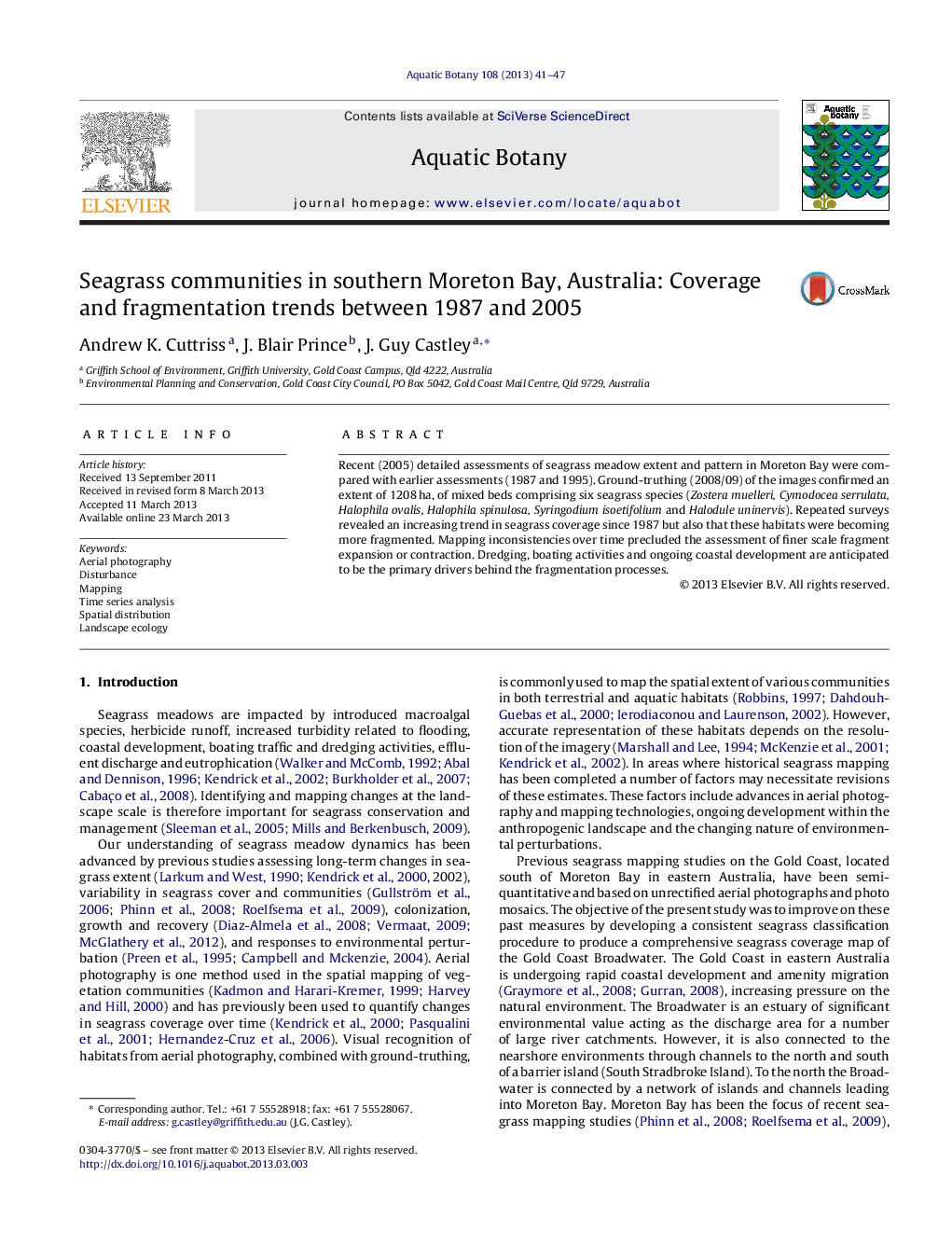| Article ID | Journal | Published Year | Pages | File Type |
|---|---|---|---|---|
| 4527908 | Aquatic Botany | 2013 | 7 Pages |
•Detailed mapping of seagrass communities was carried out at the landscape scale to assess spatial patterns between 1987 and 2005.•Seagrass meadows became increasingly fragmented over time, but covered a larger total area.•Species richness of seagrass patches increased over time.•Anthropogenic drivers potentially increase fragmentation and future research is required to quantify the mechanisms of these change agents.
Recent (2005) detailed assessments of seagrass meadow extent and pattern in Moreton Bay were compared with earlier assessments (1987 and 1995). Ground-truthing (2008/09) of the images confirmed an extent of 1208 ha, of mixed beds comprising six seagrass species (Zostera muelleri, Cymodocea serrulata, Halophila ovalis, Halophila spinulosa, Syringodium isoetifolium and Halodule uninervis). Repeated surveys revealed an increasing trend in seagrass coverage since 1987 but also that these habitats were becoming more fragmented. Mapping inconsistencies over time precluded the assessment of finer scale fragment expansion or contraction. Dredging, boating activities and ongoing coastal development are anticipated to be the primary drivers behind the fragmentation processes.
